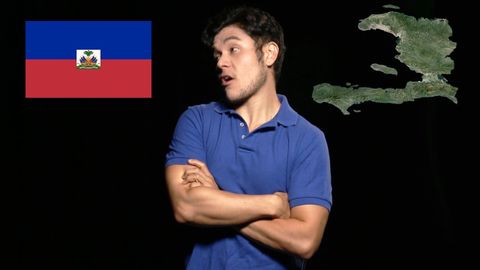地理Now!ハイチ (Geography Now! Haiti)
林宜悉 が 2021 年 01 月 14 日 に投稿  この条件に一致する単語はありません
この条件に一致する単語はありませんUS /ɪˈsenʃəli/
・
UK /ɪˈsenʃəli/
US /ˈpɑvəti/
・
UK /ˈpɔvəti/
US /'kaɪndə/
・
UK /'kaɪndə/
- n.〜のような
- adv.少し : ちょっと;一種の : ある意味で;~たい気がする
US /aɪˈdɛntəˌfaɪ/
・
UK /aɪ'dentɪfaɪ/
エネルギーを使用
すべての単語を解除
発音・解説・フィルター機能を解除

